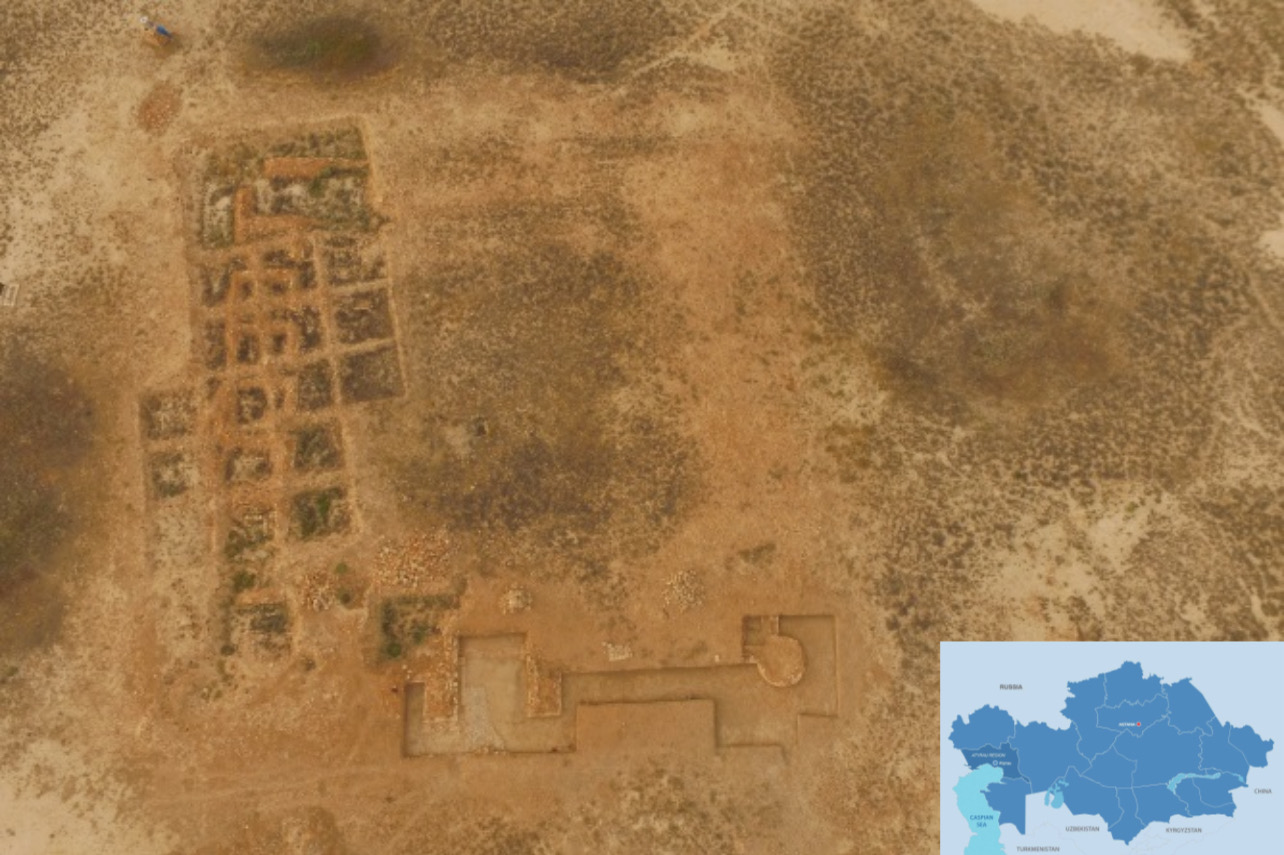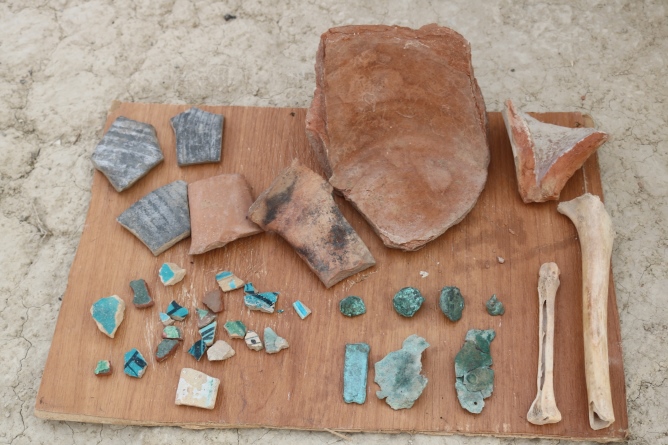ASTANA — A team of archaeologists from Atyrau has embarked on an intriguing excavation project, unearthing the historical relics of a 13th-14th century caravanserai named Taskeshu, situated along the famed Silk Road, according to Khabar TV news agency. This substantial dig covers an area of 800 square meters and illuminates a captivating chapter of history.

Photo credit: M. Izturganova. Click to see the map in full size. The map is designed by The Astana Times.
Serving as an essential hub for traders and travelers during its heyday, the caravanserai has gradually revealed its secrets as archaeologists explored its ancient foundations. Built from fired bricks, the structure features fortified facades with rounded towers at each corner.
Over the course of 50 labor-intensive days, the team excavated 24 chambers and seven towers, while also accurately identifying the site’s city gates. This work has provided invaluable insights into the caravanserai’s layout and architectural features.
“Using fired bricks for construction was an expensive endeavor in that period, requiring substantial financial and labor investments. Consequently, we can confidently state that this site was a significant city and a bustling trade center. Based on the coins we’ve uncovered, it seems that the city existed during the reigns of Tokhtamysh, the Uzbek Khan, and the Nogai rulers,” said Marat Khasenov, an archaeologist and historian.

Photo credit: M. Izturganova.
Notably, the expedition has unearthed a wealth of valuable artifacts, including everyday items, clay pottery, as well as silver and bronze coins. These findings offer a fascinating glimpse into the lives and commercial activities that once flourished along this historical trade route, enriching our understanding of the past.

